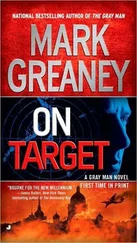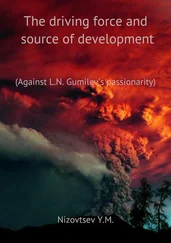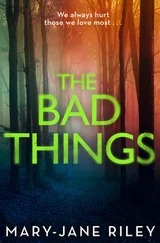2. FLASH—DIR. HWANG MIN-HO MET WITH AVALANCHE AND OTHER CHINA TECHS 2 DAYS PRIOR IN PYONGYANG—HE CLAIMS ONE (1) FURTHER SHIMENT OF LARGE EQUIPMENT TO ARRIVE BEFORE FACILITY ON LINE. NO INDICATION OF TYPE OF EQUIPMENT. WITH NO FURTHER CORROBORATION, AVALANCHE CANNOT INDEPENDENTLY CONFIRM.
3. HWANG CLAIMS HE WILL BE PRESENT AT PROCESSING FACILITY IN COMING WEEKS.
AVALANCHE
The final reference to his code name was the tip that he was not writing under duress. Had he signed off with anything else—or nothing at all—the control officers of Acrid Herald would have known the words on their screen could not be taken at face value.
Adam hit the enter key twice; this directed the satellite phone to send the digital message.
Science and Technology had warned him about this part. Back in McLean they let him know the sending could take a couple minutes, and some messages might have to be resent. As good as the technology was—and the eggheads from Langley promised it was the best—there were always atmospheric conditions that could come into play, as well as issues with other equipment at the Chongju facility.
They’d also given him one more interesting tidbit of information. Most sat phones blast their signals to one of many commercial satellites, but this phone beamed to an NSA satellite in geostationary orbit over North Korea, parts of China, and Japan. He was assured the signal would broadcast, eventually, but was reminded to wait for a confirmation from the computer in the form of a long row of dashes that ran from left to right.
After a minute and a half he received this confirmation.
Adam was pleasantly surprised the boys and girls at S&T, who didn’t have to be out in the field with the devices, didn’t just put a big flashing “MESSAGE SENT” graphic on the monitor.
51
As director of national intelligence, Mary Pat Foley was the chief intelligence officer of the United States of America, and with this role quite naturally came a tremendous amount of responsibility and a large number of draws on her time.
So the fact that she made a third trip down the George Washington Memorial Parkway to the offices of Hendley Associates indicated the importance of the intelligence product being generated by the sub rosa private outfit run by former South Carolina senator Gerry Hendley.
Today’s meeting was not with the entire Campus operational staff. Instead, only Mary Pat, Gerry Hendley, and Jack Ryan sat in the conference room. Sam was still in New York, monitoring Sharps Partners. And there would be no after-action report today as they had done to explain their activities in Vietnam, so Clark, Chavez, and Caruso remained at their desks.
Ryan imparted the knowledge they had gleaned on the operation, without going into details of shootouts and breaking and entering. He was careful to avoid any more detail about the events of Las Vegas than was necessary.
Ryan explained how a Sharps agent copied the proprietary software, certainly to give to the North Koreans.
—
Mary Pat listened carefully. When Jack’s presentation was finished, she seemed to consider how much she would tell the men around her, but apparently she decided on partial disclosure. “Your information is helpful. We have our own intelligence source that picked up something that fits in with what you are telling me.”
Jack knew better than to ask “What source?”
Mary Pat said, “The Chongju refinery is expecting a shipment of material in the next few days. The source did not know what was coming in, only that the shipment would be very large.”
Jack said, “Froth flotation cells certainly fit that description. The ones at Valley Floor are each probably the size of an SUV. They’ve got a dozen or more, so if Chongju is expecting a shipment of those, you can bet it would be big.”
Mary Pat said, “If Chongju is expecting a shipment of flotation cells in the next week, they’d be on the water right now.”
Ryan and the other Hendley men assumed there wasn’t much the United States could do about it if they were on the water. There was no law stopping the shipment of mining equipment.
—
Mary Pat returned to Liberty Crossing and immediately put in a call to CIA. Within minutes she had a team of men and women, all financial forensic specialists, trying to find any trace of either a sale or a shipment of froth flotation cells.
This was trickier than it might seem. While froth flotation cells were not exactly a common commodity bought and sold around the world, different versions of the units were used in many different kinds of industries. Additionally, it wasn’t a sanctioned material, so the commerce of the items, as for most industrial products, was not necessarily recorded.
But the team was good, and they found four recent movements of the exact material in the first three hours of research. A Canadian company had just sold nine cells of the size and capability of that supported by the software. A Brazilian mine had gone out of business in the past year and all of its cells had been purchased some months earlier. An Australian firm had custom-built twelve cells just in the past month. And a Malaysian processing facility had upgraded to new tanks and sold its old cells off.
The economic forensic team began with the Canadian transaction. Quickly it was confirmed that the goods were still in Vancouver, and were to be shipped to Brazil, to another rare earth refinery. The company, its owners, and their known affiliations were double- and triple-checked, as the CIA looked for any evidence of a straw-man purchase for the North Koreans. But ultimately they decided the transaction was legitimate.
Next they looked at the defunct Brazilian processing plant. A deep scrub of the company and the sale showed them the cells were sold from one company entity to another, certainly to avoid losing the capital in bankruptcy proceedings. The analysts asked a CIA officer in São Paulo to fly up to Belo Horizonte immediately to go “eyeball” the goods at the warehouse where the records said they were now being stored, but this appeared to be a dead end as well.
Ditto the Australian sale. Its custom-built froth flotation cells were on their way to the Lynas Advanced Materials Plant rare earth facility near Kuantan, Malaysia. This was one of the larger and more modern facilities in the world, and they processed much of Australia’s rare earths. Even though the facility was just a few years old, it was not terribly surprising that they would upgrade their cells, because new developments in the field had heralded new technology, and LAMP was cutting-edge.
This left one more transaction. Where did the old cells from LAMP go?
The analytical team saw a red flag very quickly. The machinery had been sold four months earlier to a company that existed only on paper. That company went up in smoke, but before it went out of business it transferred its capital to a holding group registered in Singapore.
This turned out to be a dead end, at least in the short term, but the analysts knew their higher-ups were hell-bent on getting quick answers. They turned their attention to the location of the physical material. Lynas was an Australian company, so a conversation between CIA director Jay Canfield and his counterpart, the director of Australian intelligence, led to a conference call between CIA analysts and Australian businessmen, which led to Malaysian shipping clerks in Kota Bharu, a port on Malaysia’s eastern shore. They confirmed a dozen large crates had been shipped in several trucks from Kuantan, warehoused in Kota Bharu, and then placed in four forty-five-foot high-cube shipping containers and placed on board a ship just fourteen days earlier.
Читать дальше












